What Natural Remedies Can Unclog a Shower Drain?
When facing a clogged shower drain, natural remedies offer an effective first line of defense without harsh chemicals that might damage your pipes or harm the environment.
The baking soda and vinegar method stands out as particularly effective for breaking down organic material like hair and soap residue that commonly cause shower clogs.
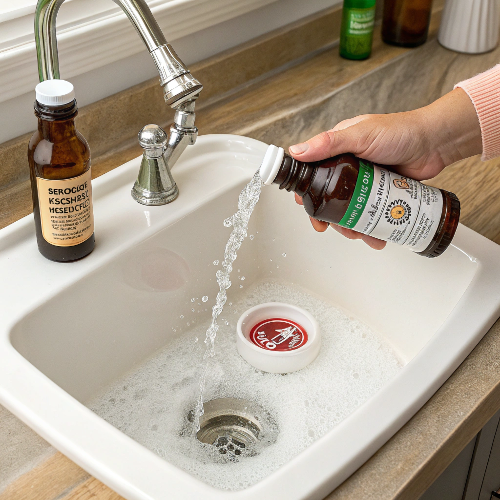
To use this method, first remove any visible debris from the drain. Pour one cup of baking soda down the drain, followed by one cup of white vinegar. The resulting chemical reaction creates a foaming action that helps break down clogs. Cover the drain for 15-30 minutes, then flush with hot water.
For more stubborn clogs, try a boiling water treatment. Simply boil a kettle of water and pour it down the drain in two to three stages, allowing the hot water to work for several seconds between each pour. This method works well for soap and grease buildup.
While hot water helps with soap scum, it typically isn't enough for hair clogs that cause most shower drain blockages.
How Do Mechanical Methods Compare to Other Solutions?
Mechanical methods provide immediate physical removal of clogs and are often more effective than chemical or natural solutions for serious blockages, especially those caused by hair.
A plunger designed for flat surfaces (cup plunger) creates suction that can dislodge many clogs. Ensure there’s enough water in the shower to cover the drain opening, then create a tight seal and plunge vigorously several times.
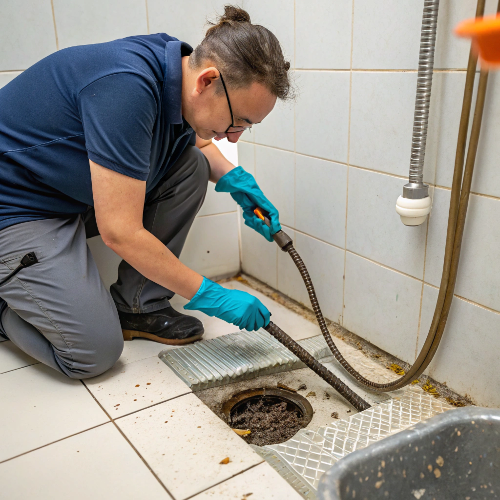
For more persistent clogs, a drain snake (also called an auger) can be incredibly effective. Feed the snake into the drain until you meet resistance, then rotate the handle to catch the clog. Pull out the snake, removing the debris with it. This method works particularly well for hair clogs that have accumulated deeper in the pipe.
Another mechanical option is using a wet/dry vacuum. Set it to vacuum liquids, create a tight seal over the drain, and turn it on at the highest setting to suction out the clog.
Drain snakes can reach deeper clogs and physically remove hair buildup that plungers often cannot dislodge.
When Should You Use Chemical Drain Cleaners?
Chemical drain cleaners should generally be considered only after attempting natural and mechanical methods, as they can potentially damage pipes, especially older ones.
If you decide to use a chemical cleaner, choose the appropriate type for your clog. Enzymatic cleaners work well for organic materials like hair and soap scum and are less harmful to pipes and the environment than caustic or acidic cleaners.
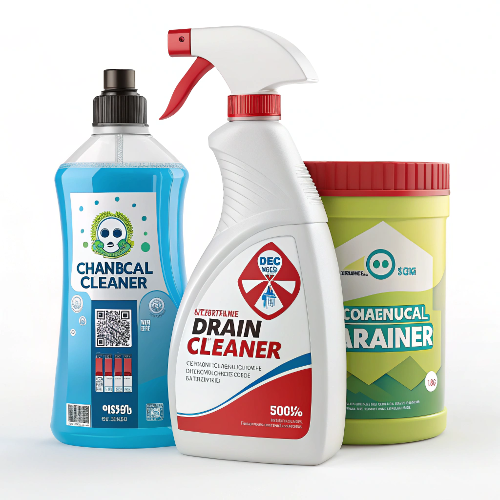
Always follow the manufacturer’s instructions precisely when using chemical solutions. Typically, you’ll pour a specific amount down the drain and allow it to work for the recommended time before flushing with water. Never mix different chemical cleaners, as this can produce dangerous gases.
For those with septic systems, look for septic-safe formulas to avoid disrupting the bacterial balance necessary for proper septic function. Many professional plumbers recommend avoiding chemical cleaners altogether due to their potential long-term effects on plumbing systems.
What Professional Options Exist for Stubborn Clogs?
When DIY methods fail to resolve your shower drain clog, it’s time to consider professional solutions that offer more powerful and thorough clearing capabilities.
Professional plumbers often use specialized equipment like high-powered drain augers that can reach much further into your plumbing system than consumer models. These professional-grade snakes can navigate through pipes and remove even the most stubborn blockages.
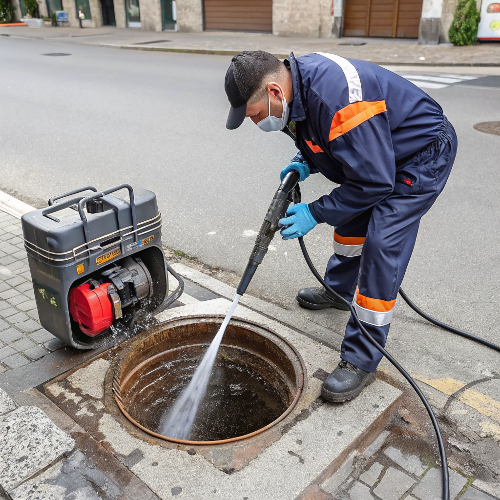
Hydro jetting represents one of the most effective professional solutions. This method uses high-pressure water streams to blast away clogs, grease, scale, and other buildup inside your pipes. Not only does it clear the current clog, but it also cleans the pipe walls, helping prevent future blockages.
In cases where a clog is particularly difficult to access or remove, plumbers may use a camera inspection to visually identify the exact nature and location of the blockage. This technology allows for more targeted and effective solutions.
While hydro jetting thoroughly cleans pipes, regular maintenance is still needed as new debris can accumulate over time.
How Can You Prevent Future Shower Drain Clogs?
Prevention is always easier and less expensive than dealing with established clogs. Implementing a few simple practices can significantly reduce the frequency of shower drain blockages.
Installing a drain cover or hair catcher is perhaps the easiest and most effective preventive measure. These inexpensive devices catch hair and larger debris before they enter your plumbing system.
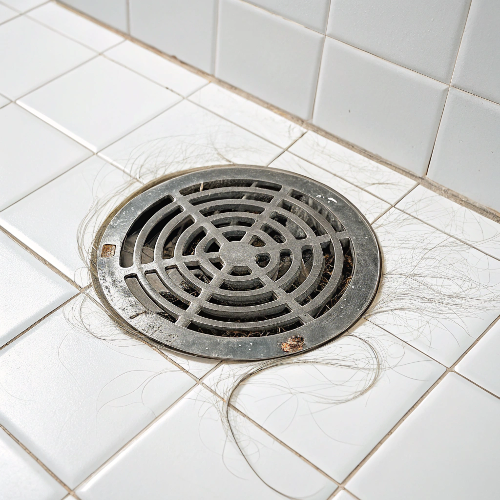
Regular maintenance makes a huge difference in preventing serious clogs. Pour boiling water down your shower drain weekly to help dissolve soap scum and prevent buildup. Monthly treatments with baking soda and vinegar can help maintain clear pipes.
Be mindful of what goes down your drain. Avoid letting excessive amounts of hair, soap fragments, or bath products with exfoliating beads enter the drain. Consider brushing your hair before showering to minimize hair loss during your shower.
For those with hard water, installing a water softener can reduce mineral buildup in pipes. Hard water minerals combine with soap to create a stubborn residue that contributes to clogs over time.
Quality drain covers can prevent up to 95% of hair from entering and clogging shower drains.
Conclusion
The most effective approach for clearing a clogged shower drain depends on the severity and type of clog you’re facing. For minor clogs, natural remedies like baking soda and vinegar often provide a safe and effective solution. More stubborn blockages might require mechanical intervention with a plunger or drain snake, which physically removes the clog.
Chemical cleaners should be used cautiously and as a last resort before calling professionals. For persistent or recurring clogs, professional services like hydro jetting offer a more thorough solution that not only addresses the immediate problem but helps prevent future issues.
Remember that prevention is key—installing a drain cover, performing regular maintenance, and being mindful of what goes down your drain can save you time, money, and frustration in the long run.
External Resources
- EPA Guidelines on Drain Cleaner Safety
- American Society of Plumbing Engineers – Residential Plumbing Guide
- Consumer Reports: Best Drain Cleaning Methods
